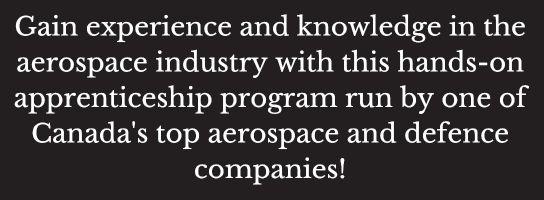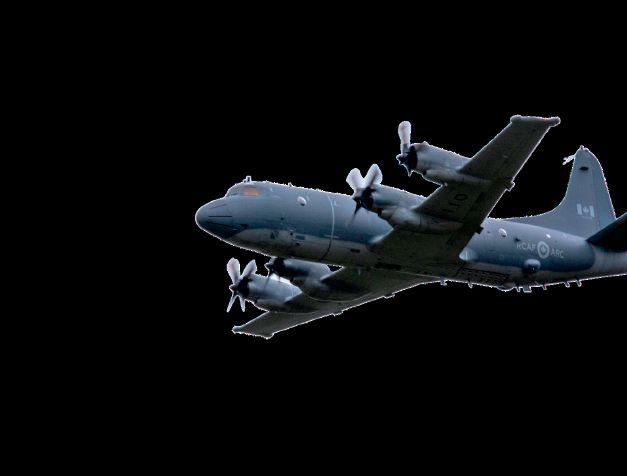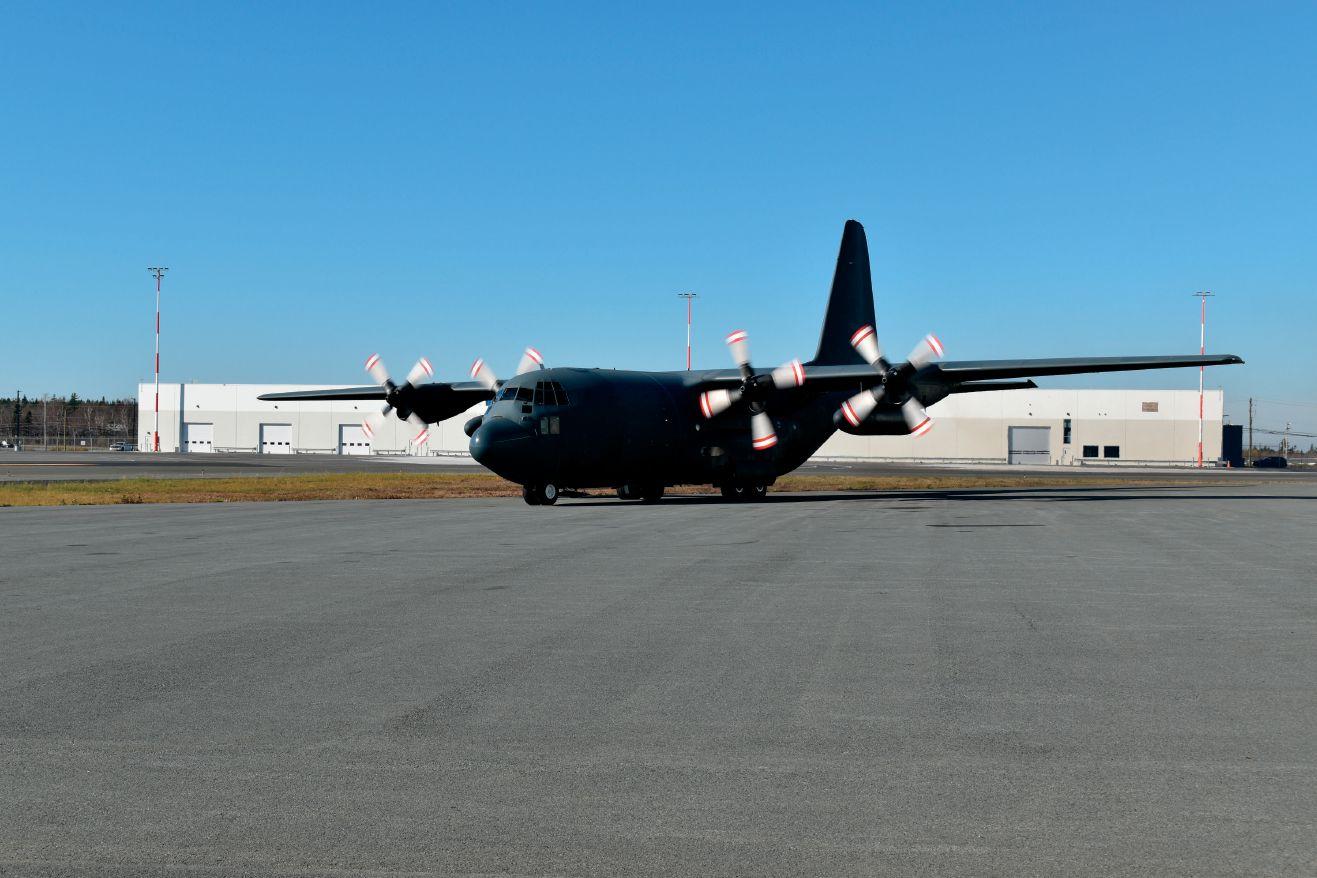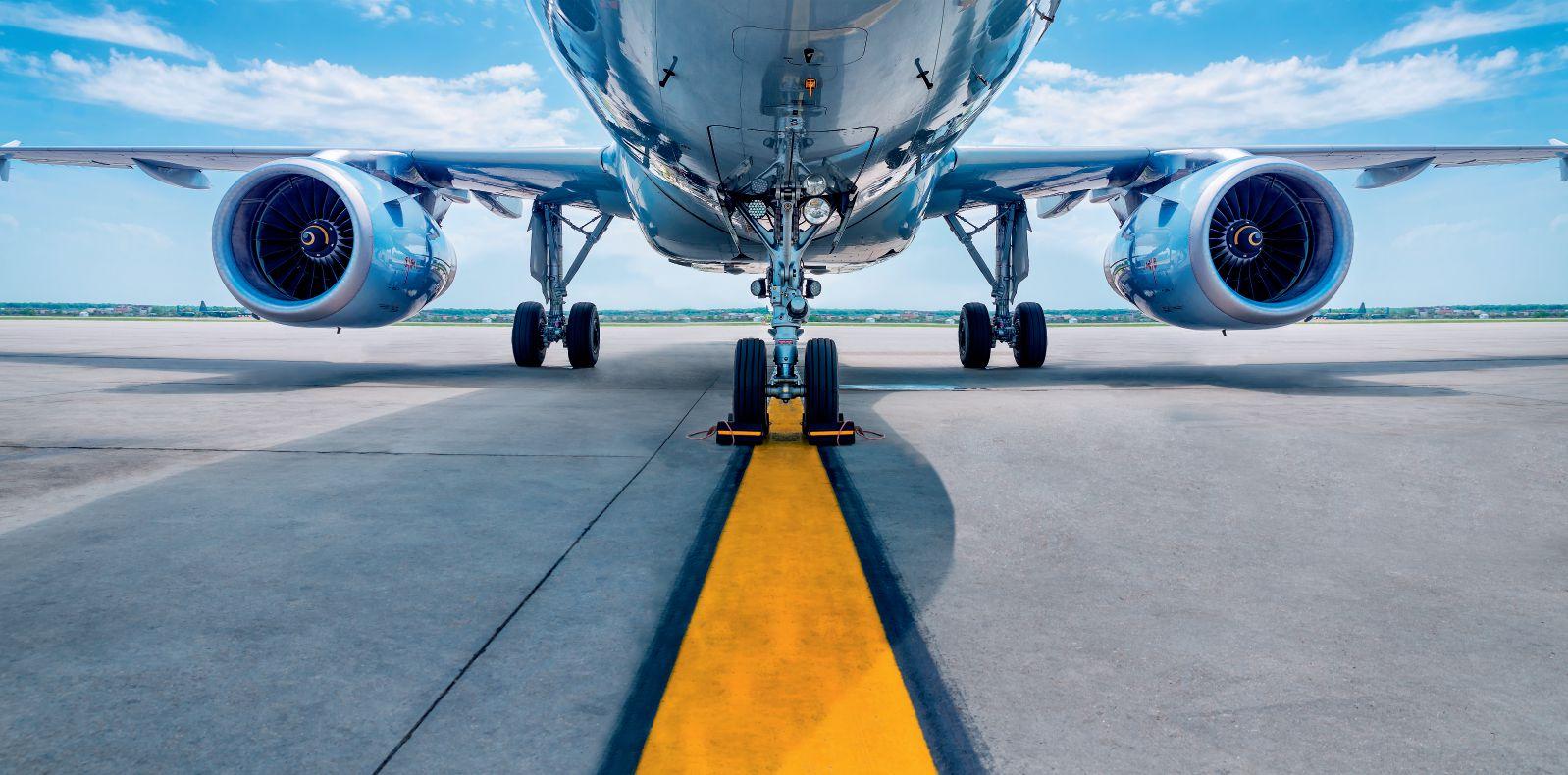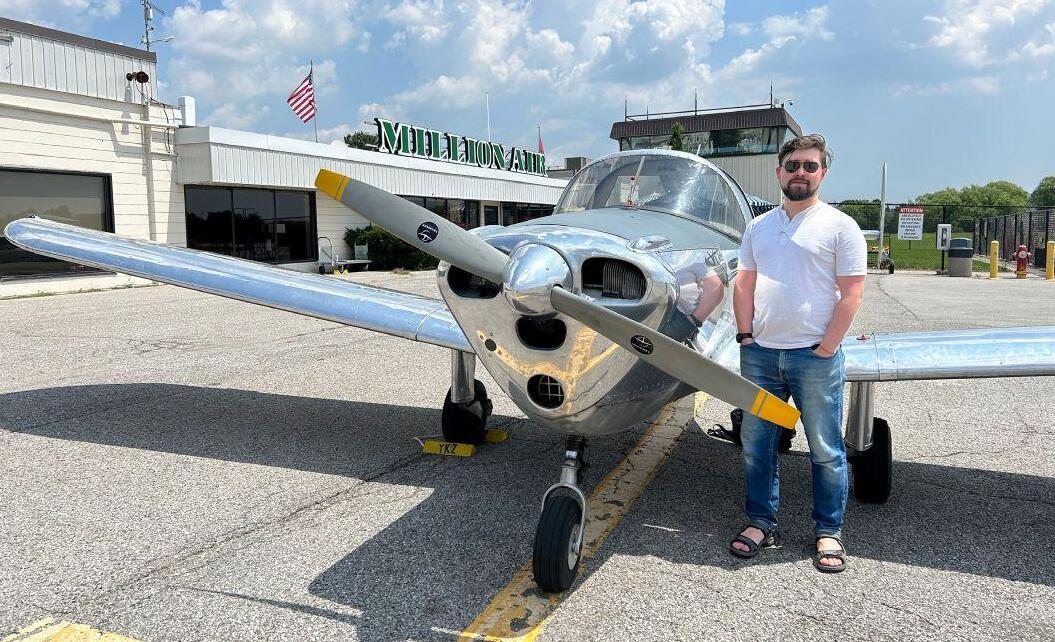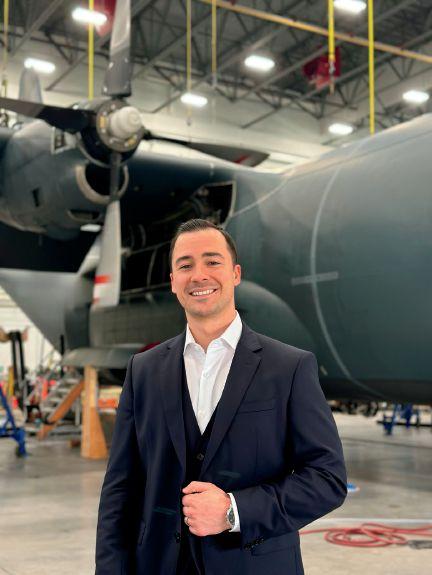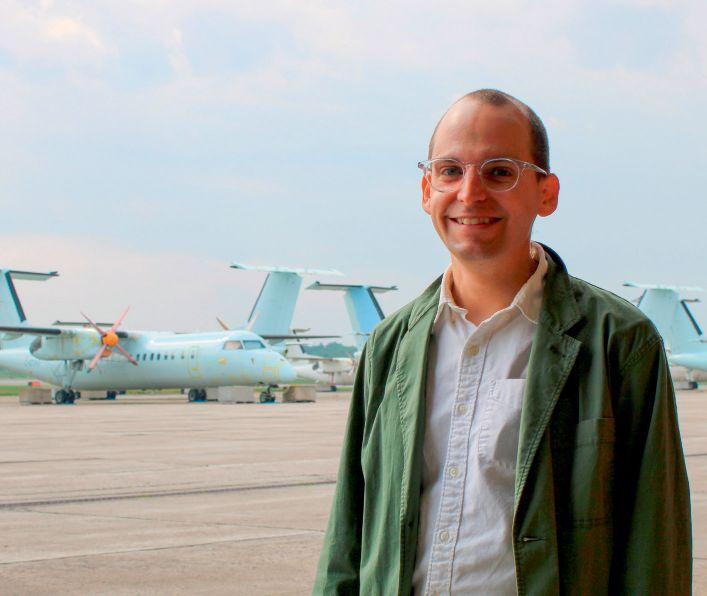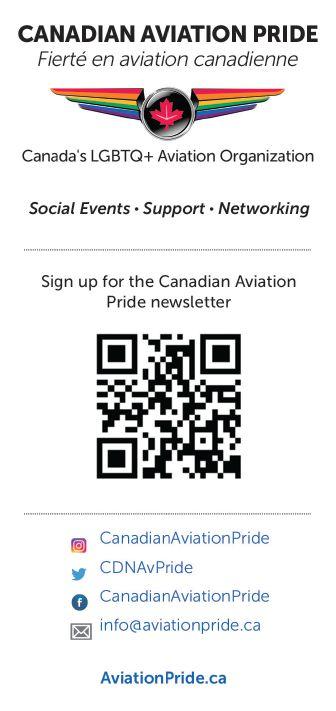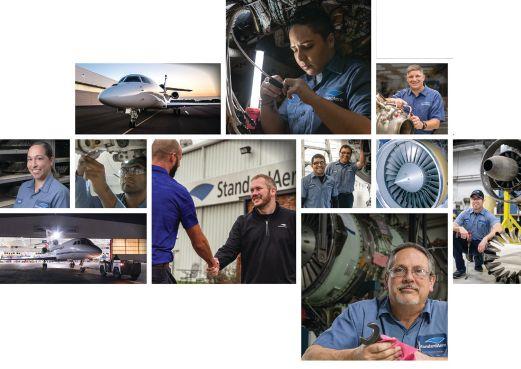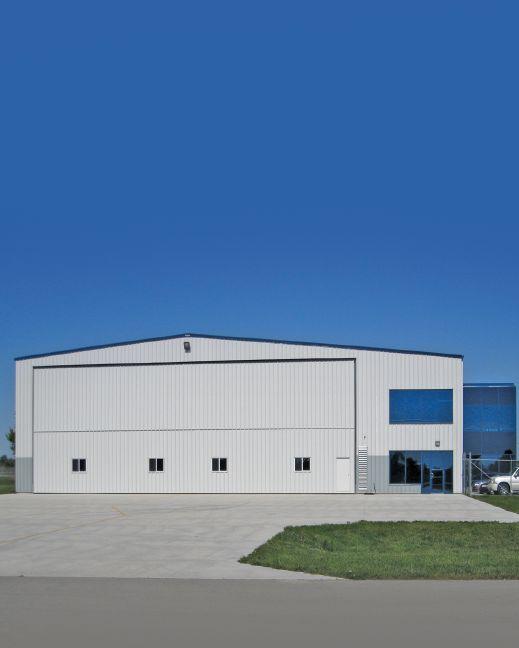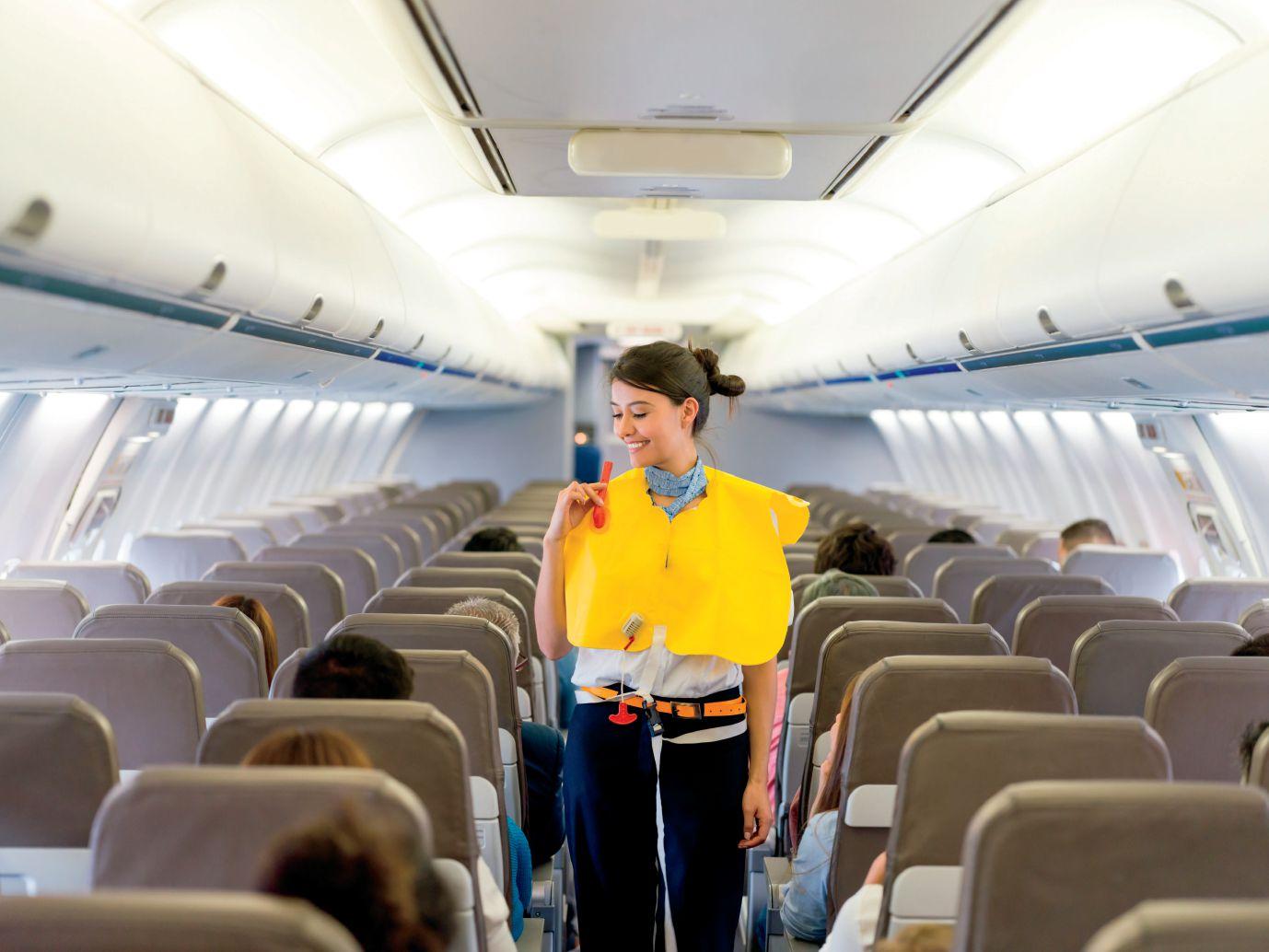company build operational efficiencies. Procedures introduced by Beaudin allow HUB to provide its clients with savings in everything from time to fuel. Beaudin has helped HUB FBO create and maintain important business relationships with some of Canada’s most important companies like WestJet, Air North, Air Creebec and Pratt & Whitney. With his operational knowledge of CYHU, Beaudin communicated with Porter Airlines surrounding its plans to develop a new terminal at the airport capable of serving more than four million passengers annually (2024 timeline). Beaudin also collaborates with NAV Canada and CYHU authorities to create safe escorting procedures. HUB is a key facility for Quebec located less than 15 minutes from downtown Montréal with a 47,000-square-foot hangar building and 80,000-square-foot ramp space situated just off a 7,800-foot runway.
Why is your company unique to work for?
HUB FBO is unique because we are a small company that is able to achieve great success due to the high level of professionalism of all team members. Our impeccable reputation over the years is attributable to the quality of service that we provide to every customer who comes to our installations here at Montreal Saint-Hubert airport, day in and day out.
IBRAHIM CHOKR
Chief Pilot, 703/704 Operations, Air Inuit, Montréal, QC Ibrahim Chokr, 30, began his aviation journey in 2011 with studies at the Centre Québécois de formation aéronautique. In 2015, he began working as a flight instructor for ALM par avion and, during the same period, he taught aviation classes to professional drone pilots with Exo Drone. Chokr in 2016 then transitioned to Exact Air of Saint-Honoré, Quebec, as a flight instructor and, in 2017, was named Chief Flight Instructor.
In 2018, Chokr joined Air Inuit as a First Officer on the Dash 8. After a year, he was promoted to Captain and flew a range of aircraft types like the Twin Otter, King Air 100 and King Air 350. In addition to flying for Air Inuit, he spent nearly three years as a Ground School Instructor and served as Training Captain on the Twin Otter and King Air 350. In October 2021, Chokr transitioned to the role of Assistant Chief Pilot for 703/704 Operations at Air Inuit and, a year later, was promoted to his current position as Chief Pilot for 703-704 Operations, managing a team of more than 60 pilots. In 2021, Chokr completed a short undergraduate program in Aviation Management at Université du Québec à Chicoutimi and he

is currently working toward a certificate in organizational leadership at HEC Montréal.
Why is your company unique to work for?
Working as a pilot for Air Inuit is a challenging yet rewarding experience. We have the opportunity to serve Inuit communities directly, playing a crucial role in keeping them connected. To do so, we navigate through some of Canada’s most remote locations and experience extreme weather conditions like freezing cold temperatures, blizzards and white-out conditions.
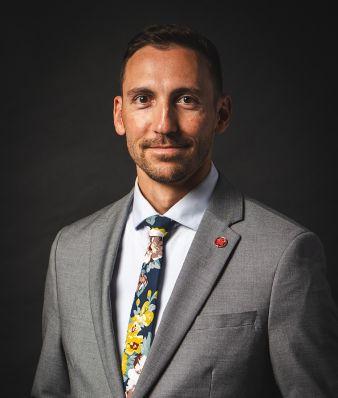
BRANDON DIMONTE
Manager, OPS Modernization, Air Canada, Mississauga, ON Brandon Dimonte, 39, has helped to manage nearly every department involving Air Canada’s frontline teams at Toronto Pearson Airport, such as customer service, ramp, baggage, tow, manpower, gate planning and connection performance, as well
as the airline’s critical Toronto Operations Centre. With his vast airport experience for the airline, Dimonte was instrumental in providing support to colleagues who had transitioned into new roles during the pandemic resource amalgamation.
Dimonte is also an Emergency Response Field Team Director for Air Canada and each year helps to lead airport emergency response training for frontline departments. He played an important role in the response of the 2015 crash of AC624, a domestic passenger flight from Toronto Pearson to Halifax Stanfield International. During heavy snow and poor visibility, the Airbus A320-211 landed short of the runway and was severely damaged, with 26 people being injured. This experience provided Dimonte with new perspectives and tools to develop innovative training methods, as well as a new approach for the positioning of emergency kits and documents for quicker emergency response.
Why is your company unique to work for?
There is nothing more unique than being your country’s flag carrying airline. Seeing the Canadian Maple Leaf, not only in our red rondelle, but across the tail of every one of our aircraft is something I have always been proud of.
PHILLIP DIXON Engineer, StandardAero, Summerside, PE
Phillip Dixon, 33, after graduating from Dalhousie University with a Bachelor of Engineering in Materials Engineering, joined StandardAero Summerside in July 2013 as a Repair Process Engineer. In this role, he provides support for the various processes

utilized by the Pratt & Whitney Canada (P&WC) authorized facility, including welding, electroplating, heat treatment and chemical cleaning and stripping. This support includes troubleshooting issues, implementation and validation of new products or repairs, and ensuring that processes comply with necessary standards.
Dixon has undertaken a number of major projects over the past decade, including: Full review of shop-facing process control procedures for all repair processes performed; complete restructuring of the electroplating process shop; creation of a reference document for programming of vacuum furnace equipment, as well as conducting training for operators, plus auditing of the existing furnace programs; and the implementation of a water treatment process for the cleaning department, which has improved cleaning chemical life, reduced the risk of corrosion, and decreased the risk of heater failure.
What drew you into aviation?
I have always had an interest in taking a close look at the materials that make up the various things around us. After receiving my degree in Materials Engineering, I was looking for an opportunity that would allow me to continue taking that close-up perspective, and aviation offered the perfect environment for that with fine tolerances, alongside a wide variety of materials and processes that go into maintaining an engine.
his career at Air Inuit when he was only 16 working the ramp with clear dedication, loading and unloading aircraft, driving forklifts, de-icing and helping customers with a high degree of professionalism. His work ethic and positive attitude made for his quick advancement within Air Inuit, moving from Ramp Agent to Cargo Supervisor to Base Manager, culminating in his current position as Manager for Air Inuit’s Ground Operations.
Named to his current position in 2019, Gadbois-Godin has demonstrated strong problem-solving skills and leadership to
promote Inuit focused implementations, that serve the communities of Nunavik and to propose creative solutions to sometimes very complex problems. In addition to managing the day-to-day operations of the company’s ground operations, with a team of managers and supervisors, Gadbois-Godin has a long-term vision to continuously improve processes for the airline’s challenging Northern Canada-focused operations.
What is your best aviation memory?
During my first 12 years at Air Inuit, based in my hometown of Kuujjuaq, I held several
MAXIME GADBOIS-GODIN Manager, Ground Operations, Air Inuit,
Montréal, QC
Maxime Gadbois-Godin, 32, started

MAXIME GADBOIS-GODIN, AIR INUIT
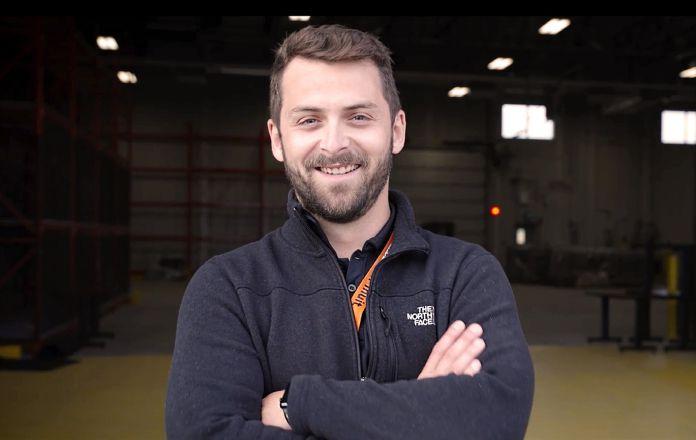
different positions from ramp agent to station manager. The overall time spent in Kuujjuaq was amazing for several reasons, including the colleagues and friends that I met through the years; the evolution of the Air Inuit fleet and the many challenges that came with it; and helping out local and regional customers from a frontline perspective.

BENJAMIN GAUTHIER
Labour Relations Advisor, Air Transat, Montréal, QC
Benjamin Gauthier, 28, developed a passion for aviation at age 16 after his first commercial flight to Cuba in 2007. His aviation career began in the airport sector at Québec City Jean Lesage International Airport, CYQB, where he worked as an Occupational Health & Safety intern. He then joined the airline sector of aviation when he moved to Montréal in 2019 and has now been at Air Transat for more than four years. He started off at Air Transat in occupational
health and safety where he was in charge of managing all the different types of claims for employees across Canada. He was then promoted to the talent acquisition department where he was solely in charge of the recruitment process for all of the airline’s pilots and was also responsible for the employment equity file.
Since the pandemic, Gauthier has evolved toward a Labour Relations Advisor position for the human resources team where he works on different types of files ranging from harassment investigations, sensitive administrative and disciplinary files, and advising managers about complex workplace issues on a daily basis. He also has also been involved in collective bargaining. Gauthier notes he was one of the fortunate team members to have keep his job through the pandemic (beyond a short six-week layoff) to help with the company’s two operational shutdowns and restarts.
Gauthier was recently awarded the Quebec Lieutnant Govenor Youth Medal for his efforts outside of work, including his participation with Force Jeunesse or the CPHR Foundation. He was recently elected to the board of the CPHR Order (HR Association) of Québec, one of the youngest board members ever. During his free time, Gauthier continues his studies (basically full time) to obtain his Bachelor of Laws (LL.B). He completed a Master’s degree on the subject of diversity and inclusion; and continues to advocate for inclusion within the aviation industry at large.
What is your favourite aviation memory?
July 23, 2020 – The moment Air Transat took off again after almost four months of a historical shut down due to the pandemic. I still remember the joy and excitement that employees had to see the blue star back in the sky again.

NEENA GILL
Vice President and General Manager, StandardAero Helicopters, Winnipeg, MB
Neena Gill, 37, joined StandardAero in May 2007 as a summer student, while studying for her Bachelor of Commerce (Honours) degree at the University of Manitoba’s I.H. Asper School of Business. After four months, she was hired by StandardAero as a part-time Planner/Buyer. In January 2009, Gill was appointed as an Engine Sales and Leasing Specialist, where she assisted with the sale, lease, purchase and disposal of StandardAero’s engine assets. In this role, Gill worked with external and internal customers, preparing quotes, approving rental engine maintenance cost estimates, and finalizing rental/exchange engine sales agreements.
In August 2009, after completing her BComm (Hons) degree, Gill was appointed as Senior Accounting Clark, a role which set the stage for her future progression within the company. Her duties in this position included preparing monthly financial dashboards, performing general ledger account reconciliations, and assisting with internal and external audits. While in this role, Gill achieved her Certified Management Accountant (CMA) designation through CMA Manitoba’s two-year Strategic Leadership Program. She was also a recipient of the Robert Half Team Achievement Award for the highest academic standing in Manitoba on the CMA Board Report and Presentation.
In March 2012, Gill was appointed as Controller of StandardAero’s Turboprop and Fleets (TPAF) Business Unit, achieving one of the fastest career advancements within the accounting specialization in the company’s history. Gill directed the operations of the approximate $200 million TPAF business unit, managing full cycle
accounting, budgeting and business case analysis for 10 different product lines and legal entities across four countries, while also acting as back-up to the TPAF VP/GM during periods of absence. In April 2023, Gill was appointed to her current role of StandardAero’s Helicopter Business Unit, where she is responsible for a business which supports 3,000 operators in over 85 nations, across five different engine families and 11 airframes, supported from 10 locations in four nations worldwide.
What is your favourite aviation memory?
One of the biggest achievements of my career was being hired on as Controller of the Turboprops business unit when I was just 25. This was a huge accomplishment for me as I had just been in the analyst role for under two years and giving me this role was a true leap of faith by the leadership team of the time. I was given the opportunity to further prove myself and learn how to run a business very early in my career.
SAEED GOLZAR
Founder and CEO, Airble Aviation, Richmond, BC
Saeed Golzar, 33, founded Airble Aviation
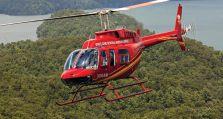


in 2019 with the goal of providing an online marketplace that facilitates seamless access, optimization and promotion of charter flights, both one-way and roundtrip. The company’s business strategy, allowing otherwise empty flights and seats to be promoted and occupied, also helps to prevent the creation of new charter flights, thus eliminating emissions, which continues to grow as one of aviation’s most public challenges.
Golzar started his career as a pilot and

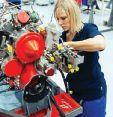
has more than a decade of commercial and private flying experience, including time as a First Officer on ATA Airlines’ EFIS equipped A320 and MD-83. He also holds a Master's degree, Business Administration and Management, from Shahid Beheshti University
As CEO of Airble, Golzar is leading a team of 12 young Canadians who built a Canadian-made Uber of the Air for the first time ever. To date, Airble has been privately funded by Golzar. Airble has not raised any external funds and is currently in the process of seeking investment to assist in customer acquisition and further product development. Today, Airble has 14 Canadian air operators on the platform representing 38 aircraft across the country. Airble also has more than 10,000 active users and plans to soon expand into the United States based on requests by passengers and U.S. air operators.
Why is your company unique for work?
The possibilities of showcasing areas of Canada that are unknown to the public through aviation. Promoting local operators and different geographic heights to new clients. The excitement of building a single commit platform and app in Canada by Canadians.
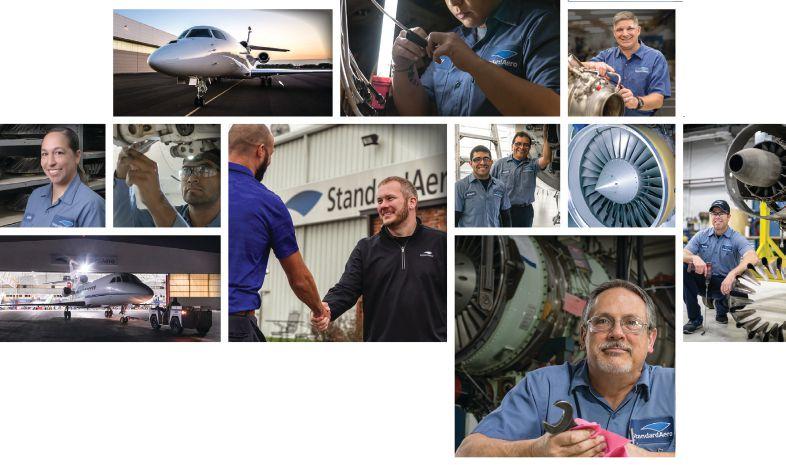
The world’s largest independent MRO provider
With over a century of proven excellence, StandardAero has built a reputation as the industry leader and best place to work. Serving the most discerning clients and maintaining premier aircraft, the global StandardAero family takes pride in offering extensive MRO services and customized solutions through trusted service partnerships with our customers.




Phil Dixon and Neena Gill embody the customer focus which is a hallmark of StandardAero’s 7,000 employees. We are proud to see them included in Wings’ Top 20 Under 40. Congratulations to Phil, Neena and all of this year’s winners!
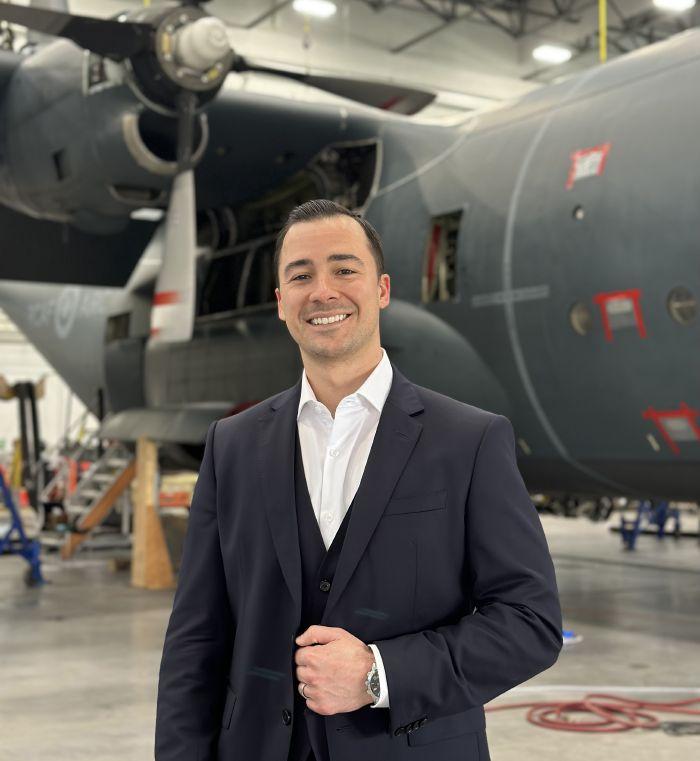
SPENCER GOSSEN
Vice President and General Manager, IMP Electronic Systems
Hammonds Plains, NS
Spencer Gossen, 33, is a senior executive at IMP Aerospace & Defence, which has long served as one of the Canada’s leading ISS providers and aircraft parts manufacturers. He originally started working at the company in high school as a labourer/sweeper before attending Dalhousie University to study Commerce. After graduation, Gossen joined KPMG as an auditor and attained his designation as a Certified Public Accountant. Following a three-year tenure at KPMG, he moved across the country to join IMP’s Cascade Aerospace in Abbotsford, BC. He quickly became a Manager at Cascade Aerospace, where he assumed a pivotal role in overseeing all aspects of the manufacturing and maintenance side shops.
Gossen saw an opportunity to return home to Nova Scotia when an opening as Director, Material Operations became available at IMP Aerospace. In that position, he was responsible for procurement, control and distribution of all inventory for internal programs, as well as the administration of facility services contracts. He managed a workforce of over 100 employees and had bottom line responsibility.
For the past three years, Gossen has been the VP and GM of IMP Electronic Systems, which is an operating unit of IMP Aerospace & Defence. Based in Hammonds Plains, NS, the facility services space, air, land, and sea sectors with wire harness design and manufacture, electronics equipment repair and overhaul, and equipment calibration. The workforce behind IMP Electronic Systems grew 30 per cent in the last two years and is now over 120 people. He’s put the facility, which opened in 1977, through an extensive revitalization program, which included updating the IT systems, renovations to various aspects of the property, and enhancements to the management system.
“Locally, we provide essential support to DND's Cormorant Search and Rescue fleet, recognized as a world leader in flying rates for AW-101 helicopters,” explains Gossen. “Additionally, we played a significant role in the electrical manufacturing of De Havilland's CL-215 aerial firefighting aircraft, an endeavour that holds even more significance with the recent wildfires in our home province of Nova Scotia. Globally, we have contributed to the manufacturing effort on the Armoured Combat Support Vehicles, of which 39 units were donated to Ukraine.” Gossen also points to IMP Electronic Systems designing and manufacturing wire-harnesses in the space sector, including the Fine Guidance System of the James Webb Space Telescope.
Why is IMP a unique place to work?
I consider myself fortunate to be part of such an exceptional team and to engage in projects for world-class customers, influential industry partners, and dedicated government officials. I look forward to many more years in this dynamic industry, embarking on new and exciting projects alongside a fantastic IMP team and a remarkable group of industry stakeholders.
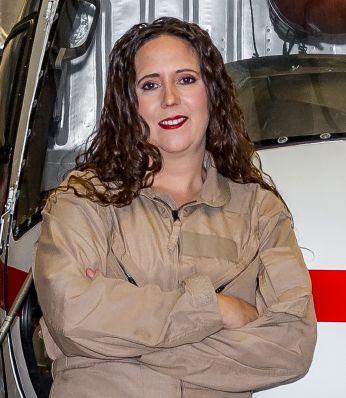
BECKY
GRIMSRUD
Base Manager and Pilot, Delta Helicopters, Fort St. John, BC Becky Grimsrud, 39, grew up without direct exposure to aviation, which of course is the opposite of a common thread found among many leaders in the industry. The idea of becoming a helicopter pilot popped into Grimsrud’s head on the same day that she passed her motorcycle road test, at age 19. Two years later in the Spring of 2005, she started flight training and has been a fixture of the aviation industry ever since, with the exception of one year off after Highland Helicopters shut down. Grimsrud tried her hand at an office job, but very quickly realized aviation is where she belongs. Today, she manages the Fort St. John base for Delta Helicopters, founded in 1972.
Grimsrud has now accumulated more than 4,300 hours while starting a family and raising two daughters (now 10 and almost 12). In addition to flying, Grimsrud spent three years as a Quality Assurance Manager for Flight Operations (from 2012 to 2015), as well as two and a half years as a City Councillor (2008 to 2021). She volunteers with numerous local non-profits, including helping to host Elevate Aviation’s 2023 Cross Country Tour leg at North Peace Regional Airport, CYXJ, in Fort St. John. She also helped with the organization’s Cross Country Tour in 2019, before the pandemic. Grimsrud is also a member of the Whirly
Girls and the International Society of Air Safety Investigators. Grimsrud in 2016 was awarded a scholarship to take a five-day Crew Resource Management Instructor course, through Whirly Girls and Oregon Aero. She has since taught the course to a number of pilots and local parattack crews. Fort St. John is one of only two Parattack bases in Canada. Grimsrud remains heavily involved with her community, volunteering and engaging in politics.
Why is your company unique?
What I most appreciate about Delta is being given the opportunity to innovate at my base within the obvious company and regulatory parameters. It’s a fairly large company with significant resources, but it still feels like a family.

CASSANDRA HEPP
Lead Aircraft Maintenance Engineer, HeavyAero Maintenance Centre, Olds, AB Cassandra Hepp, 27, is among the relatively few women Aircraft Maintenance Engineers in Canada, a number estimated to be at around three per cent, which has propelled her to become one of the industry’s most ardent advocates to promote more female representation in the field. She has spoken to many students to describe the challenges and opportunities of being an AME. Hepp since 2019 has volunteered with Elevate Aviation, which provides a platform for women and underrepresented groups to succeed through careers in aviation. Hepp was one of eight recipients of the 2022 Elevate Aviation Inspire Award. As an AME with M1 and M2 licences, Hepp has worked for several major Canadian operations, including Flair Airlines, Canadian North and Summit Air,
in addition to her apprenticeship at WestJet Encore. Her career has taken her all over Northern Canada and she has gained an appreciation for the importance of aviation in remote regions. She spent more than two years as a base engineer in Resolute Bay with Canadian North and her apprenticeship took place in the Nunavut community of Fort Smith. She worked for a few years in Yellowknife, followed by rotational work in Iqaluit. In these challenging remote environments, Hepp excelled under the pressure of travelling as an AME with specific aircraft to ensure its safe operation. She has reached communities like Grise Fiord and Alert, which is the most northern inhabited place in the world at 83 degrees north. Hepp joined HeavyAero in January 2023.
Why is your company unique to work for?
Coming from a mostly line maintenance background into heavy maintenance this year has been a steep learning curve, but I am having so much fun. I have completed tasks at HeavyAero that I haven’t done during the past eight years in my career. I know my future is so bright with HeavyAero, and they value me as an employee. I have so much support from the leadership team and that is very important to me.

ASHWIN
Vice President, Business Development, e-Fuels, Twelve, Montréal, QC
Ashwin Jadhav, 38, in March 2023 joined Twelve, a chemical company headquartered in Berkeley, California, that makes everyday products from non-oil alternatives. He oversees sales and commercial strategy for Twelve’s sustainable aviation

fuel (SAF) products, a critical sector as the aviation industry, under ICAO’s guidance targets net-zero emissions by 2050. Jadhav explains, that with battery technology, hydrogen-propulsion and other enablers at low Technology Readiness Levels, SAF is an immediate and potentially widespread solution. His team focuses on the SAF powerto-liquids sub-segment, which Jadhav says shows tremendous potential due to higher carbon reduction, reliance on renewable sources, and abundant feedstock (carbon dioxide). Captured CO2 can be turned into carbon-neutral fuels
Twelve aims to play a key part in scaling this technology. Jadhav recently completed large-volume deals and added airlines like Etihad and Air Canada to the Twelve portfolio. He brings more than 15 years of aviation experience, including prior leadership in new engine sales for Pratt & Whitney Canada. He has also led commercial strategy and forecasting for the Q400, CRJ Series, and C Series (now Airbus A220) aircraft at Bombardier and held leadership roles at the International Air Transport Association in Montréal. Jadhav serves on the board of Muskoka Airport, CYQA, in Ontario.
What is your favourite aviation memory?
My years with Bombardier before its divestiture were my most memorable. With the launch of the C-Series, we had ventured into uncharted territory in the single-aisle aircraft market and were up against the world’s largest OEMs.

STEPHEN LEE Manager, Structures Engineering,
Voyageur Aviation, North Bay, ON Stephen Lee, 37, started his career in aviation in 2009 as a Structural Design Engineer and has since earned his Professional Engineering license in Ontario and is working toward becoming an authorized person
within Voyageur’s Design Approval Organization. He currently leads a team of several structural engineers, helping to initiate innovative modification projects for both civil and military aviation, focused on national security and defense, environment and natural resources, and air medical transport.
Lee’s first assignment after joining Voyageur was to help design elements of a missile defence system installation for a customer aircraft. He has since accomplished successful designs and gained Supplemental Type Certificates for a variety of aircraft modifications to serve the public’s interest, such as enabling scientific research and improving patient transport with The British Antarctic Survey and Ambulance New Brunswick, respectively. He led a project that converted a Dash 8 to a smokejumper configuration, which meant collaborating with a foreign air operator and various regulatory and airworthiness bodies to achieve a capacity not seen before on this Canadian aircraft type. Lee is co-chair of Voyageur’s Employee Resource Group with a mandate to foster a culture of diversity and inclusion.
Why is your company unique to work for? Voyageur Aviation delivers innovative solutions to customers with unique aviation requirements. In my position, this translates to supporting the development of modification STCs for aircraft in a variety of interesting special mission roles, for customers that span the globe – be it maritime surveillance in the east coast of Canada, environmental research in Antarctica, or smokejumper operations in Alaska – all from our facility in Northern Ontario.

MANDEEP MANGAT
GM, Aircraft Maintenance, Air Canada, Surrey, BC
Mandeep Mangat, 38, has helped lead the management of Air Canada’s airframe
maintenance in British Columbia since July 2022. Managing day-to-day activities including planning, scheduling and estimating of maintenance jobs, Mangat has developed new processes and also proactively started building relationships with MROs to diversify Air Canada’s landscape of aircraft maintenance facilities.
Mangat previously spent more than two years from 2018 to 2020 with the flag carrier out of Windsor, Ontario, at CYQG, as site manager for airframe maintenance. He began his aviation career with Cascade Aerospace as an Aircraft Maintenance Engineer, where he spent more than five years, before joining Aveos Fleet Performance and then venturing out on his own as a technical consultant, which brought him into contact with Air Canada from 2016 to 2018. In July 2020, Mangat joined Conair Aerial Firefighting for two years as an Enterprise Resources Planning Specialist.
What drew you into the world of aviation?
Growing up in Richmond, BC, near YVR airport, I was constantly exposed to the sights and sounds of airplanes taking off, landing, and flying overhead. The regular exposure gave me both a sense of familiarity and curiosity about airplanes. The technology advancements, complexity, and sophistication of aircraft has always been fascinating to me. I find the ability to travel long distances quickly and efficiently to be both exhilarating and liberating.
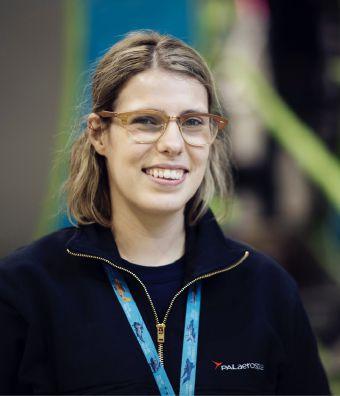
JADE MARSHALL Quality Manager, PAL Technical Services, Winnipeg, MB
Jade Marshall, 30, cultivated an interest in aviation in her early teens, earning her Glider and Private Pilot licenses through the Air Cadets program. While she loved flying, Marshall decided to attend the College of the North Atlantic’s Aircraft Maintenance
Engineering Technician program. She joined PAL Technical Services shortly after graduation as an Avionics Apprentice.
Marshall earned her AME E license and started to take on crew leadership at her home base in St. John’s, NL, and later Winnipeg, MB. Her roles at PAL pivoted many times, demonstrating her ability to adapt to the circumstances and challenges around her. Marshall has played key roles in PAL’s maintenance departments, including heavy maintenance, modifications, fixed wing search and rescue, including modification of Dash 8s for The Department of Fisheries and Oceans, and inaugural type training for Canada’s C-295.
Marshall in 2021 took on the role of Heavy Maintenance Manager for PAL’s new MRO location in Winnipeg. She has since built a permanent production and support staff for that base, which includes a team that is comprised of 40 per cent women. Marshall, with the growth of the Winnipeg base, recently accepted the position of Quality Manager for the YWG Heavy program.
Why is your company unique to work for? Building and maintaining fully equipped aircraft for Intelligence, Surveillance and Reconnaissance, air ambulance services and special mission capacity offers a unique and exciting look into aerospace that I didn’t know existed before working at PAL.
JOE PERSICONE
Boeing 757/767 Line Check Pilot, Cargojet, Hamilton, ON Joe Persicone, 39, is the youngest Boeing 757/767 Line Check Pilot, Line Training Captain and Type Rating Instructor at Cargojet, a scheduled cargo airline with its main operational base at Hamilton International Airport and more than 1,650 total employees. Persicone has more than 10,000 flight hours with the majority on Boeing airplanes. Previous to Cargojet, he worked for Air Canada, as a First Officer on the 767 and as a 737 MAX Sim instructor, and Sunwing Airlines, as a Line Training Captain on the Boeing 737 NG/MAX.
Prior to his 705 airline experience, Persicone worked for Kenn Borek Air flying Twin Otters around the world. He was involved in unique private and public sector science programs across the Arctic, including some in support of the Polar Continental Shelf program, NASA, and world record attempts. He also flew floats in the Maldives. Persicone holds a diploma in Aircraft Mechanics and is working toward his Bachelors in Management. He also volunteers his time as a warbird pilot with the Edenvale Classic Aircraft Foundation. He

has served on the board of directors for the Borden Flying Club and is actively involved with various non-profit organizations such as the EAA, COPA, IAC and the College of Professional Pilot’s of Canada. Persicone in his spare time is restoring a Pitts Special S1D in his garage.
What drew you into aviation?
We fly all around the world to places like Japan, England, Brazil and many others in between. I could be flying a domestic flight to Vancouver one day and then doing a new Captain’s line check or ETOPS training the next. Flying for Cargojet has given me a tremendous amount of opportunity to grow as a person and a pilot.
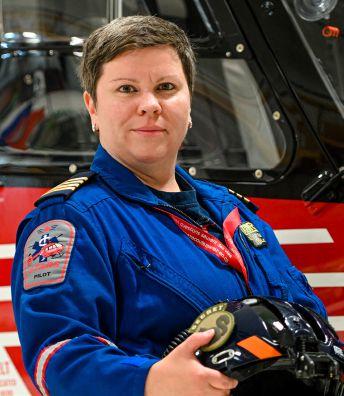
PAULA QUIROGA
Captain, STARS, Grande Prairie, AB
Paula Quiroga, 38, is a dedicated and highly skilled pilot who has made significant contributions to the field of air ambulance
services. As an aircraft Captain, she has flown numerous critical missions, often in challenging weather conditions and in remote areas. Her expertise has helped to save countless lives. In addition to her work as a pilot, Quiroga routinely fills in as manager at the STARS Grande Prairie base. In this role, she has been responsible for overseeing the day-to-day operations of the base and ensuring that the team is effectively working together to provide the highest level of care to patients.
No one in Quiroga’s family was involved in aviation, so she did not have any direct exposure to it as a child, but she remembers catching the passion for aviation at age 16 during a canoe trip when a float plane flew overhead and landed on the same lake. Quiroga would go on to earn her helicopter pilot’s licence at age 18.
At STARS for more than seven years now, Quiroga began flying for the organization on aircraft that were manufactured in the 1980s. In March 2023, STARS took delivery of its tenth Airbus H145 helicopter, marking the completion of its initial fleet renewal that began in 2019. Powered by two Safran Arriel 2E engines, the H145 is equipped with full authority digital engine control and Airbus’ Helionix digital avionics suite. These customized aircraft for STARS are now among the most advanced emergency medical service helicopters in the world.
Why is your company unique?
Working for STARS has been an amazing opportunity for me and the most meaningful flying that I have done. What I love most is the team aspect of it. Every time that we launch for a mission, we go together as a team – Two pilots, a nurse and a paramedic. We are there to help people on their worst
day, by safely transporting them to the appropriate hospital while the medical crew provides critical care.

Civil Aviation Safety Inspector, Airworthiness, Transport Canada, Surrey, BC
Alisha Sohpaul, 28, has held multiple management roles in her relatively short 10-year aviation career. A licensed M1 and M2 Aircraft Maintenance Engineer, she is dedicated to helping to pave a path for other women to realize their full potential. At age 22, Sohpaul became the Person Responsible for Maintenance (PRM) of the AOC at Kisik Aerial Survey.
She was the youngest and the first female at Jazz Aviation to step into the Line Maintenance Supervisor and Maintenance Controller positions. In 2021, at age 26, Sohpaul became the PRM of Iskwew Air's Aircraft Maintenance Organization (AMO). Sohpaul also co-founded the non-profit Hangar Queens as the first female AME network in Canada.
Earlier this year, Sohpaul started a new role at Transport Canada and is now completely off the tools and overseeing a variety of AMOs from the regulator’s perspective. In June 2023, Sohpaul was named as a recipient of the 2023 Northern Lights Aero Foundation’s Elsie Awards program, in the Rising Star category, which is designed to recognize Canadian women who have made significant contributions to aviation and aerospace.
Sohpaul volunteers with Canadian Women in Aviation and Elevate Aviation and has been VP of the Pacific Aircraft Maintenance Engineering Association. She also serves on the BC


Aviation Council’s Youth Engagement committee.
Favourite aviation memory?
Becoming the Person Responsible for Maintenance at Iskwew Air was a big career highlight for me. Not only was I running a female-led maintenance department but I also built the Aircraft Maintenance Organization from the ground up.
ZOEY WILLIAMS
First Officer, Air Canada, Mississauga, ON
Zoey Williams, age 26, began flying at age 15 and spent her early years in aviation in a range of roles from fueling aircraft to flight dispatch and flight instruction. Inspired by her father, a pilot for Air Canada, to grow as a role model for other young women of colour, Williams attained an Advanced Diploma in Aviation Flight Management, a Bachelors in Aeronautics and

Aviation Management, and a Masters in Business Administration specializing in Aviation and International Business. Williams, who earned her
at age 21, gained commercial experience in the north flying with Wasaya Airways on the Beechcraft 1900D before joining Sky Regional out of
Mississauga as a First Officer on the Embraer 175. In 2020, Williams reached the majors after being hired at Air Transat to earn her type rating on the A321. After the pandemic, Williams returned to the skies as a First Officer with Flair Airlines on the 737 before returning to Air Transat on the A321.
In 2022, Williams was hired as the first black female pilot at Air Canada and in early 2023 became a First Officer on the Boeing 777. She continues to build her role as an advocate for diversity and inclusion as a board member of the Urban Pilots Network, where she is Scholarship Director. Williams was also awarded Jazz Aviation’s Pathway Award for Professionalism and Diversity.
Why is your company unique? The 777 is wonderful to fly and being at the controls of an aircraft over 300,000 kilograms that flies around the globe is nothing short of amazing. | W
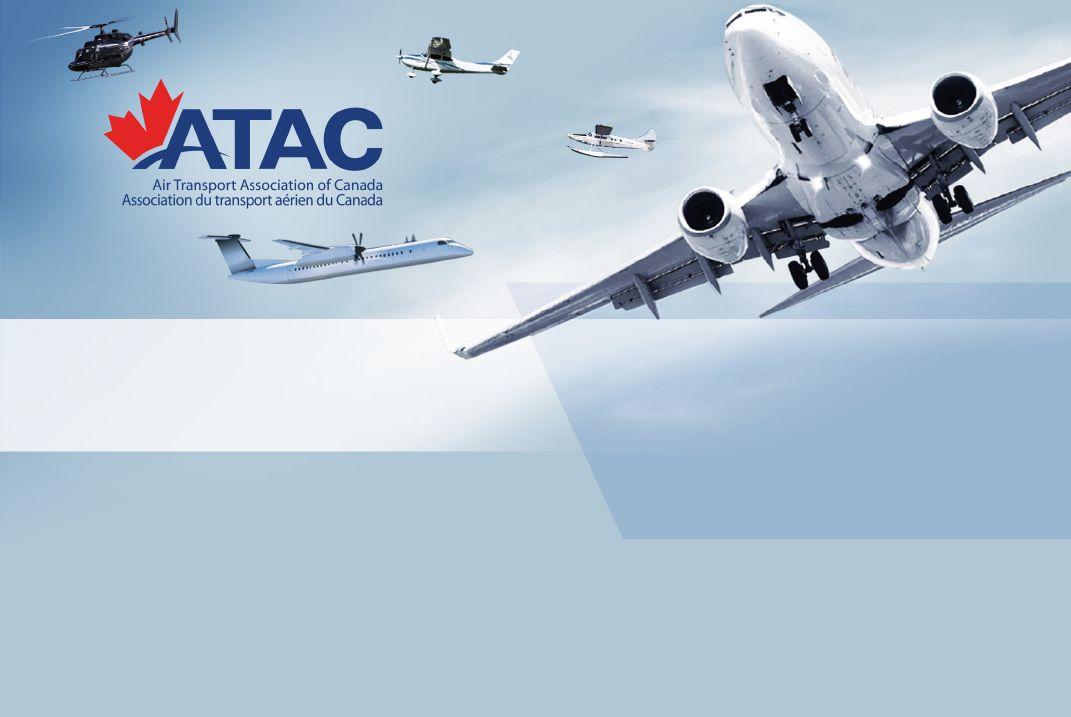
ATAC’s Canadian Aviation Conference and Tradeshow is the premier national gathering offering Canada’s best networking, learning, and sales opportunity for operators, suppliers, and government stakeholders involved in commercial aviation and flight training in Canada.
TUESDAY, NOVEMBER 14 TO THURSDAY, NOVEMBER 16 FAIRMONT QUEEN ELIZABETH HOTEL MONTREAL, QC
For more information contact: Debbie Simpson, Tradeshow Manager 613-884-7728 tradeshow@atac.ca www.atac.ca










